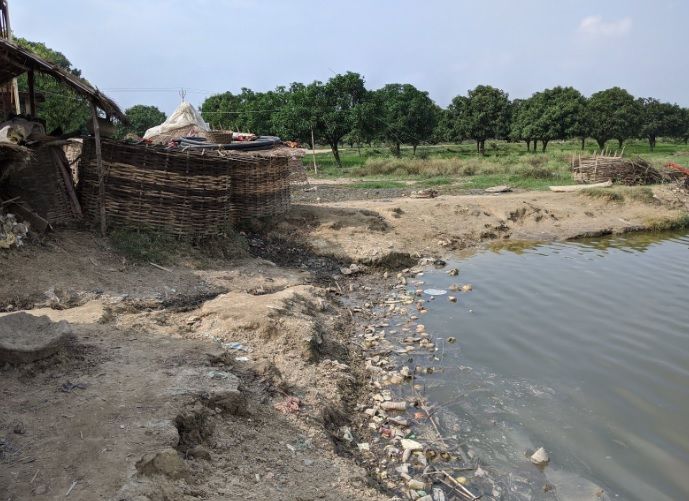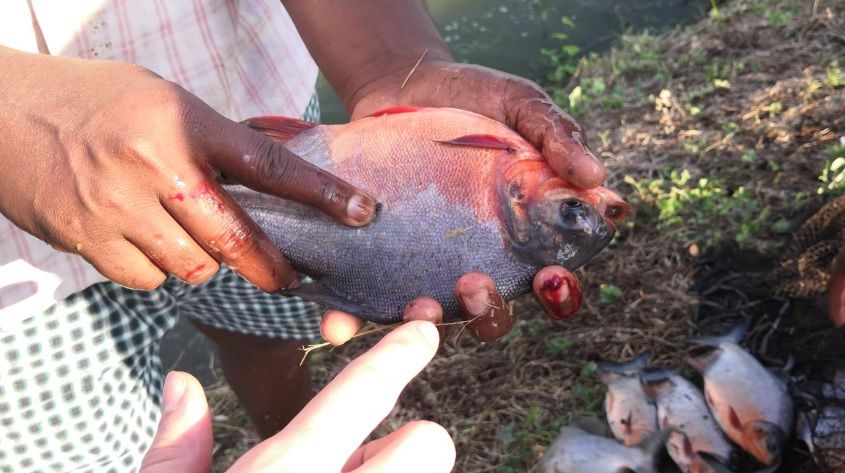Murky Waters: India is the world’s second largest fish producing country. How safe are its aquaculture farms?
A 2020 survey conducted on 241 waterbodies in 10 states of the country has yielded alarming results showing blatant violation of health and hygiene norms in the fishing practices in India.


Photo: Pixabay
Between February and November 2020, the Federation of Indian Animal Protection Organisations (FIAPO), a collective of animal protection organisations in the country conducted an investigation and compiled a report on its findings titled Aquaculture, an investigation on trends and practices in India.
As part of its project, FIAPO, along with a nonprofit All Creatures Great and Small, that works for animal rights, investigated 241 aquaculture farms (161 freshwater farms and 80 brackish water farms), across nine states and one union territory in the country. The survey included fresh as well as saltwater farms in Andhra Pradesh, Tamil Nadu, Puducherry, Gujarat, West Bengal and Odisha and freshwater ponds in Bihar, Jharkhand, Chhattisgarh and Assam.
The findings were alarming, with the water quality in Tamil Nadu’s fish farms being the worst. The farms in Tamil Nadu, Odisha and Bihar were also found to be most threatening to the environment. Toxic substances such as lead and cadmium were found in the fish.
“If the report has detected high levels of lead and cadmium, this is dangerous for fish and fish-eaters. If fish are bred in a polluted environment, there is a risk of a variety of diseases,” Sutapa Bishwas, project consultant at National Fisheries Development Board in Hyderabad, told Gaon Connection.

India is the second largest fish producing country in the world and ranks second in aquaculture production as well as inland fisheries. In 2018-19, the country’s fish production was 137 crore tonnes, with the contribution of 95 lakh tonnes by the inland sector and 41 lakh tonnes contributed by the marine sector. In 2017-18, India exported 13.7 lakh tonnes of fish, worth over Rs 45,000 crore.
Describing the condition of the fishes in some of the farms as ‘shocking’, Varda Mehrotra, executive director of FIAPO, said, “Fishes are reared in filthy ponds without any waste management process. They are cut alive. These fishes are released from the fields into local water sources and localities of contaminated water, causing parasite growth which is detrimental to fish population as well as human beings,” he said adding that this was a long standing problem in the farms.
The waters were dirty and stagnant, there were no aerators to maintain the required levels of oxygen in the ponds, and therefore there was a rise in the amount of nitrogen. The longer water remains stagnant, the higher are the chances of algae development that rapidly depletes oxygen in the water, Mehrotra pointed out.

Troubled waters
Many fishermen said they suffered huge losses due to diseases and floods. The fish farms were lacking basic maintenance levels and were often surrounded by mounds of garbage, or areas of open defecation, nearby. Barring Andhra Pradesh where the waters in the farms were regularly tested, in the other places unless a disease in the fish was detected, no testing was done.
As per the Prevention of Cruelty to Animals rules 2001 and food safety and standards regulations, 2011, any animal, including fish, should be healthy when taken up for human consumption. Although the licensed slaughterhouses observe this rule, few fish farms adhere to it.

Also, the fish feed prepared by the farmers often lacked nutrition, with no attention being given to the specific kind of feed each type of fish required. Also, blatant violations of the ban on breeding fish such as the Mangur catfish were observed. Breeding this fish heightens the risk of antimicrobial resistance (AMR), disastrous for both fish and humans who consume it.
Indiscriminate use of antibiotics in fish is another problem area in the aquaculture industry. In 2019, the US rejected a consignment of Indian shrimps as it contained antibiotics.

